To watch the commercials for the Verizon Droid, being released tomorrow morning, one might get the impression that this is the very first android handset to be released. It certainly has garnered more attention and excitement and previous devices, but there are already a number of android handsets on the market that are actually quite good. I recently had a chance to spend a week with Sprint’s version of the HTC hero, and I found myself more than a bit impressed. So with that in mind, I thought we might take a good look at a fantastic Android device that’s been on the market for a number of months already.
I had the opportunity to spend some time with the very first android handset — the T-Mobile G1 — when it was first released. I wasn’t all that impressed. The handset itself felt rather cheap. The operating system, while quite intriguing, seem to be poorly matched to the hardware and it limped along. I hated — yes I hated — the physical keyboard. And I wasn’t much of a fan of the “chin” — I never fully understood the design, and it made using the handset in landscape difficult. I wasn’t all that unhappy about sending it back.
My next experience with android device was an imported HTC Hero. This was a big improvement over the T-Mobile G1. The hardware felt quite nice — it was well-built, had a sleek design, and I was more than a bit pleased that it didn’t have the physical keyboard. No, I didn’t find the touchscreen keyboard to be as responsive or easy-to-use as the iPhone’s, but it certainly worked. Add to that HTC’s own SenseUI, a skin over at the basic android interface, and you had one sleek device. It, however, was a bit problematic for me as well. HTC’s modifications put more of a demand on the processor than might have been otherwise, and yet the processor hadn’t been beefed up significantly. While it was fast and smooth when I first booted up, after a bit of time it began to bog down and the screen would have a bit of a lag at times. Add to that the fact that as an imported handset, it didn’t work on AT&T’s 3G network, and this device was returned for a refund.
Next up was experience with the T-Mobile MyTouch- also known as the T-Mobile G2. Now we were getting somewhere. The handset had a sleek design. It didn’t have a clunky physical keyboard, it felt fantastic in the hand, and it didn’t seem to have the same degree of lag that I experienced with the other devices. I was quite impressed … until I got home and discovered that T-Mobile has zero service in my neighborhood. Back it went as well.
Then HTC and Sprint were kind enough to send me a review unit of their version of the HTC hero to use for week. When I first opened the box I wasn’t all that impressed. I had loved the industrial design of the original HTC hero. It’s angular body was sleek. Call me shallow — but it just looks cool. By comparison, Sprint’s version was curved; it looked like a softer gentler version of its older sibling. But once I started holding the device I discovered that they made an excellent choice here. By rounding the device’s corners, it felt even better in the hand. While it still had a tiny bit of a chin, it was far flatter than any of the other android devices I have tried. The result was that it feels more polished and, as someone who’s used an iPhone for the past two and half years, it feels a bit more familiar as well.
The physical buttons at the bottom of the screen are a nice compromise between the iPhone’s total lack of buttons and the Blackberry’s numerous physical buttons. On the hero of the buttons don’t get in the way, but it’s nice to have the key functions right there whenever you need them — with one button you can go back one step, you can pull up the menu, etc. The rollerball works well, although to be honest I found myself using the touchscreen instead of the rollerball 99% of the time. Overall the physical device feels well made, polished and was a pleasure to hold and use.
The Hero was running the updated operating system — cupcake 1.5 and overall it just seemed to run better. Yes, with tomorrow’s release this operating system is already old, but it ran quite well on the device. I found to be very little lag in the screen. I’m not sure how Sprint and HTC had modified the handheld so that it didn’t have the lag I had seen on the original version, but they had.
As was and is the case with all Android, the integration with Google’s applications was phenomenal. I simply entered my Gmail account when the device first booted, and all of the services that I use or available to me. My Gmail was right there. My calendar was as well. There was no need to implement basic programs or some sort of workaround to get access to my calendar and e-mail — all was right there.
Perhaps the biggest selling point for an Android device, at least for me, is the tight integration with Google Voice. I was able to set the phone in such a way that Google voice was the primary “number” for the handheld. When I made a call out I didn’t have to wait for a “callback” the way I did when using Google voice on my iPhone; it just became the main phone connection for the device. As someone who relies heavily on Google voice this was awesome.
The various widgets that are available and the numerous screens that you can have on the device were also great. Unlike the iPhone, I was able to configure the device to that I was able to get the information I wanted immediately upon turning it on. The degree of customization that’s available is remarkable and more than a bit appealing. It made the iPhone’s user interface feel — well to be honest — last generation. And the more I played around with the device and customized, it the more useful it became.
Browsing in the device was good, although I still find the iPhone’s browser to be best in class among handheld devices. That isn’t to say that browsing on the hero was sub par — it wasn’t, but given the choice I would still use the iPhone over it.
The media player on the Hero is phenomenal. It’s easy-to-use, has a pretty and usable interface and feels as tightly integrated into the device as it does on the iPhone. By comparison, the media player on the Blackberry Bold feels like an afterthought thrown onto the device in order to make it a little more current.
As you can see the comparison shot above, the Hero is just a bit smaller than the iPhone 3GS and significantly narrower than the Blackberry bold. Of the three devices, it feels best in the hand and when used as a phone. By comparison the Blackberry is by far the best e-mail and messaging device, and the iPhone is the best pocket computer/pocket browser.
The bottom line is this — the new HTC Verizon Droid Eris device is being released tomorrow morning. It’s got great buzz and initial reviews are quite good. It won’t be the “iPhone killer” Verizon would like it to be, but it certainly has the potential to take a bite out of Blackberry, Windows mobile and other devices. More importantly it has finally allowed the Android platform to break through to the general population. People who had no clue that Google has created its own operating system for handheld devices are increasingly aware that Google is becoming a player. The physical device has a slide out keyboard which is a huge attraction to many people — not to me, however. And I suspect that it will be a huge hit for Verizon and will keep Motorola from disappearing into the annals of history … at least for a time. But the Droid isn’t the only Android device on the market. In fact, it’s not the only good Android device on the market. If you’re a Sprint customer in the market for a new phone, it is definitely worth checking this one out prior to jumping ship and moving to AT&T for the iPhone or Verizon for the droid. If this particular handset were available on AT&T’s network, I might very well be using it.
The long and short of it is this — the Android platform has come a huge way since the T-Mobile G1. Yes, it is still missing some key productivity apps as compared to the iTunes App Store offerings but it’s already a player in the marketplace, and that will only continue to grow in the months and years to come. If this is the type of device you’re looking for, your already have a few different choices — and at least two of them are excellent.
The HTC Sprint Hero is available directly from Sprint as well as other resellers.
MSRP: $479.99 without a plan, or $179 after $100 rebate and $200 instant savings
What I Like: Nice hardware, awesome integration with Google services including Google Voice
What Needs Improvement: Could use beefier processor, Not on AT&T but I am, Some key productivity apps still missing from Android Marketplace









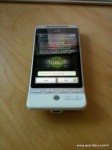








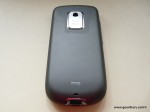






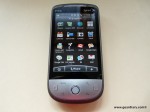
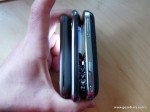
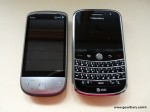





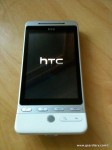

A friend of mine at work has the Sprint Hero and I played with it and was pretty impressed.